Download Printable Cantaloupe Growing Guide »
Here in Indiana, cantaloupe is a THING. The soil, weather, and long growing season here are absolutely perfect for growing melon vines of all kinds, but cantaloupe plants particularly love growing here! The vines are vigorous, the melons are huge, and the flavor of an Indiana cantaloupe is unmatched!
But even if you don’t have the perfect soil and the perfect climate, we can still teach you all you need to be super successful with your own cantaloupe. Let’s learn how to grow cantaloupe!
Table of Contents
Is cantaloupe easy to grow?
As long as you have the right conditions and enough space, cantaloupe is a breeze to grow. Cantaloupe (like cucumbers and other cucurbits) really love hot weather, and they tend to spread, so you’ll want to make sure you have enough growing space—or you can train them up a fence or trellis to grow them vertically.

What kind of cantaloupe will work best for my garden?
The traditional cantaloupe you’ll buy at the grocery store or farmers’ market is actually a muskmelon—in fact, all cantaloupes are muskmelons, but not all muskmelons are cantaloupe. There are hundreds of varieties of melons you can grow in your garden, but if you’re looking for a traditional cantaloupe with bright orange flesh and netting on the rind, here are some of our favorite cultivars:
- Sugar Cube—This smaller cantaloupe is a great option if you want to trellis your melons without needing to support the weight of the melons. It has great disease resistance, and is a pretty good keeper!
- Athena—This variety has a lot of disease resistance, which makes it a great option for beginners. The flesh is a deep, bright orange!
- Minnesota Midget—This variety is a winner if you are short on space and short on warm weather! It’s perfect for colder climates and for container gardening.
Growfully Protip
Remember that the best way to figure out what varieties grow best in your area is to talk with other gardeners! Ask your local Master Gardeners group, talk to a local hardware store employee, or ask your old-timer neighbor who always has a beautiful plot!
Should I grow melon from seeds or starter plants?
Folks anywhere from zones 4-10 can grow cantaloupe as a summer annual, but because of their long growing time, how you grow them will depend on your climate.
Here in the Lower Midwest (zone 6), we’ve done trials with growing cantaloupe from both transplants and trying to start melon seeds straight in the ground after our frost date and had similar results with both.
Like all cucurbits, cantaloupes take off quickly once the weather warms up, so in many mild or warm areas, you don’t need to start seedlings in pots—and in fact, your plants might struggle from transplant shock that delays them more than if you would have just sowed seeds straight in the ground.
However, if you are in a cooler climate, you might have better results starting your seeds indoors a month or so before your last frost date.
Download Printable Cantaloupe Growing Guide »
How many melons will I get from each plant?
How many melons you’ll get will depend largely on the cultivar you choose, how strong the activity of bees and pollinators are in your area, and your growing conditions, but you can estimate you’ll get at least 2-3 full-size melons per vine.
How do I grow cantaloupe from seeds?
You can start cantaloupe by starting seedlings indoors or by sowing seeds directly in the garden, depending on your climate. Let’s cover both!
How to Start Cantaloupe Seedlings Indoors
- About four weeks before the last frost date, sow seeds into sterile seed starting mix in large seedling pots, large soil blocks, or in seedlings trays with large openings—cantaloupe seedlings grow large quickly! Cantaloupe seeds are large seeds that need to go about 1/2″ deep when planted. We like to plant 2-3 seeds per spot to ensure germination of at least one.
- Keep the seedlings evenly watered and very warm! Cantaloupe seeds germinate best in a soil temperature of 75° to 85°F. Most people starting melon seeds indoors will need a seed starting mat to achieve this temperature.
- Once the seedlings have germinated, keep the seedlings evenly watered and warm. They will grow vigorously! Use small snips to clip off all but the strongest seedling in each cell.
- After your last frost date, plant the cantaloupe seedlings 36″ apart in the garden.
How to Sow Seeds Directly in the Garden
- Amend your garden beds with at least 1-2 inches of compost before planting.
- After your last frost date, sow seeds 1/2″ deep in the soil directly into the garden in small hills or rows spaced 36″ apart.
- Once the seedlings have germinated, use small snips to thin the cantaloupe seedlings to 2-3 per hill, or one plant every 36″ in a row.
When should I plant cantaloupe seeds?
If you are sowing seeds directly in the garden, you need to wait until after your last frost date for your region—preferably after the soil is at least 70°F. If you are sowing seeds indoors in pots for transplants, you can start the seeds four weeks before your last frost date in your region. You can use the calculator below to figure out the date for your area.
What do cantaloupe plants need to thrive?
Cantaloupe plants are pretty easy to take care of once you have them established! Like most other garden plants, they like about an inch of water per week—a bit more if it’s very hot out. A good layer of organic mulch like weed-free straw, mulched leaves, or pine shavings can help keep the soil evenly warm and help retain moisture.
Drip irrigation, soaker hoses, or hand watering all work for watering cantaloupe, although we’d recommend avoiding overhead irrigation (like sprinklers) during the most humid parts of summer to help reduce the risk of powdery mildew and downy mildew.
As long as you have a bed amended with good quality compost and organic matter, you won’t need to do much fertilization on your melon plants. A monthly dose of fish emulsion, kelp, or compost tea will do the trick!
Download Printable Cantaloupe Growing Guide »
How long do cantaloupe seeds take to germinate?
In warm soil (above 75°F), cantaloupe seeds will pop up quickly—within 3-5 days. In cooler soils, it might take as long as a week to 10 days before they germinate.
How long does it take for a cantaloupe plant to grow?
Cantaloupe plants are long-season crops, meaning they’ll need 75-80 days of quality warm weather after germination before you can harvest your melons.
Can I grow cantaloupe vertically?
Sure can! Cantaloupe cultivars with smaller fruits can be grown up a strong trellis or fence without much (if any) fruit support. For full-size cantaloupes, you’ll want to create a hammock for each melon to help support them on the trellis. Pieces of cloth, old pantyhose, or mesh bags are great for making the hammocks.
Can you grow cantaloupe in a raised bed or containers?
Cantaloupe vines are big plants that like to spread out, but you can absolutely grow them in raised beds or containers! Smaller, bushier cultivars (like Minnesota Midget) are a great option for container gardening. For raised bed gardening, you might have your vines overflow the edges of the bed, but just as long as they won’t be trampled by feet, wheelbarrows, or other garden tools—that’s just fine!
Can I grow cantaloupes if I live in a cool climate?
Many folks in cool climates successfully grow cantaloupes by extending the season. You can do this by starting seeds indoors before your first frost date, using black plastic film to warm the soil, or using cold frames.
What can I plant next to cantaloupe? What can’t I?
One of the biggest troublemakers with cantaloupes are pests like squash bugs and cucumber beetles, but thankfully, you can greatly reduce your insect issues with some simple (and beautiful) companion plants! Strongly-scented flowers like marigolds, nasturtiums, and tansy work well to repel squash bugs and cucumber beetles. For veggie integration, you’ll have good luck companion planting cantaloupe with strong-smelling crops like onions, mint (put it in a pot or it’ll take over the bed!), basil, or garlic.
We recommend you avoid planting cantaloupe next to or immediately after any other cucurbits—watermelon, cucumbers, winter squash, etc.
Troubleshooting
Oh no, I’ve got pests! What should I do about aphids, cucumber beetles, squash vine borers, or squash bugs?
Insects are a natural part of organic gardening, so don’t be worried—we can take care of it! Here’s what we recommend for four of the biggest cantaloupe pests:
- Aphids: If aphids are in a small area, you can just clip or trim off the leaves that are infested . If you have a large aphid infestation, insecticidal soap or Bacillus thuringiensis (Bt) are good options. To protect pollinators, only use insecticidal soap during the morning or evening during low pollinator activity (the residue from insecticidal soap is not toxic to bees and other pollinators, but it is toxic if they are on the plant when sprayed).
- Cucumber Beetles: Many cantaloupe plants can survive a cucumber beetle infestation once they are past their early plant stages, but one of the bigger problems is that cucumber beetles often spread bacterial wilt—which has no treatment. To treat an early infestation of cucumber beetles, hand pick and destroy adult beetles and eggs. If the vine does have bacterial wilt, there is no treatment—remove and destroy the plants.
- Squash Bugs: Squash bugs are most problematic to young plants—they rarely cause widespread damage to large or mature plants. But they certainly can do a number on young plants! Squash bugs are particularly tricky to manage—one of the only ways to keep on top of it is to catch them early and to hand pick off the adult bugs and drop them into a bucket of soapy water. Make sure you also crush their eggs on the undersides of leaves to prevent hatching.
- Squash Vine Borers: The problem with squash vine borers is that you don’t know you have them until your plant is wilted, dead, and you see the tale-tell sign of sawdust-like material at the base of your cantaloupe stem—so prevention is the key. Squash vine borers overwinter in soil, so one of the best ways to prevent them is to make sure you rotate and have at least a two-year break between cucurbits in beds. Another way to stop the squash vine borer females from laying eggs on the stem of your cantaloupes is to put an empty toilet paper roll around the vines at the soil level.

Growfully Protip
Prevention is always the best method when keeping pests away. Make sure you companion plant with repellant plants and keep your soil healthy!
The leaves on my cantaloupe plant look mottled, spotted, or browning.
Oftentimes spots, molting, or browning on the leaves of a cantaloupe plant can indicate a bacterial or fungal disease. Here are a few of the more common cantaloupe plant diseases to keep an eye out for:
- Alternaria leaf spot (blight): This fungal disease is caused by high humidity, high temperatures, and overhead watering. Small, yellow-brown spots appear on the oldest leaves first. As the lesions spread, leaves begin to curl and eventually die. Prevent this by making sure to rotate cantaloupe and other cucurbits regularly and by clearing garden debris each year. Make sure to water using a soaker hose, drip irrigation, or near the base if hand watering.
- Powdery mildew: This fungal disease will show up with small, dusty white lesions on the leaves of the cantaloupe plant. A cantaloupe plant will continue to produce with powdery mildew—but it will eventually prevent the plant from producing as vigorously as a plant without an infection. Catch it early enough, and you can treat powdery mildew with organic fungicides like a copper fungicide or a DIY mix. For the DIY mix, combine one tablespoon baking soda and one-half teaspoon of liquid soap with one gallon of water, and spray the mixture liberally on the plants. To prevent, make sure plants are well spaced out with good air circulation. Make sure you clear plant debris from the garden each year.
For more information about fungal and bacterial diseases that impact cantaloupe plants, we recommend checking out this article from Penn State University.
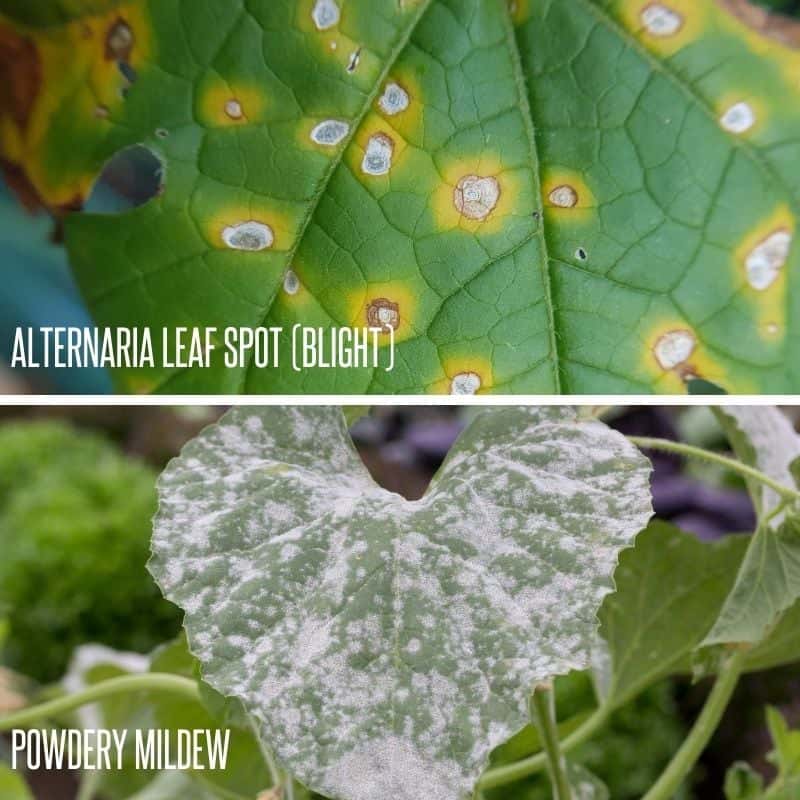
Eek! The leaves on my cantaloupe plant are wilted.
Wilted leaves are typically a sign of a thirsty plant! It is not unusual for the leaves of melon plants to wilt slightly in the heat of the afternoon summer sun. Check on them the next morning—if the leaves have perked back up, no need to water. If they are still wilted, give them a good drink.
Help! The end of my fruits are yellow or brown and soft.
Sounds like you have blossom end rot! This happens when the melon is deprived of calcium during development. Once you have blossom end rot, there is nothing you can do to save the melon, but you can prevent it in the future.
To prevent blossom end rot, you want to both make sure the calcium levels in your soil are adequate through regular soil testing and make sure you improve the methods through which plants uptake calcium. Namely: keep your cantaloupe plants evenly watered. Calcium is distributed through a plant through water, if there isn’t enough water, calcium has a hard time reaching the bottom of the melon—causing blossom end rot.
Download Printable Cantaloupe Growing Guide »
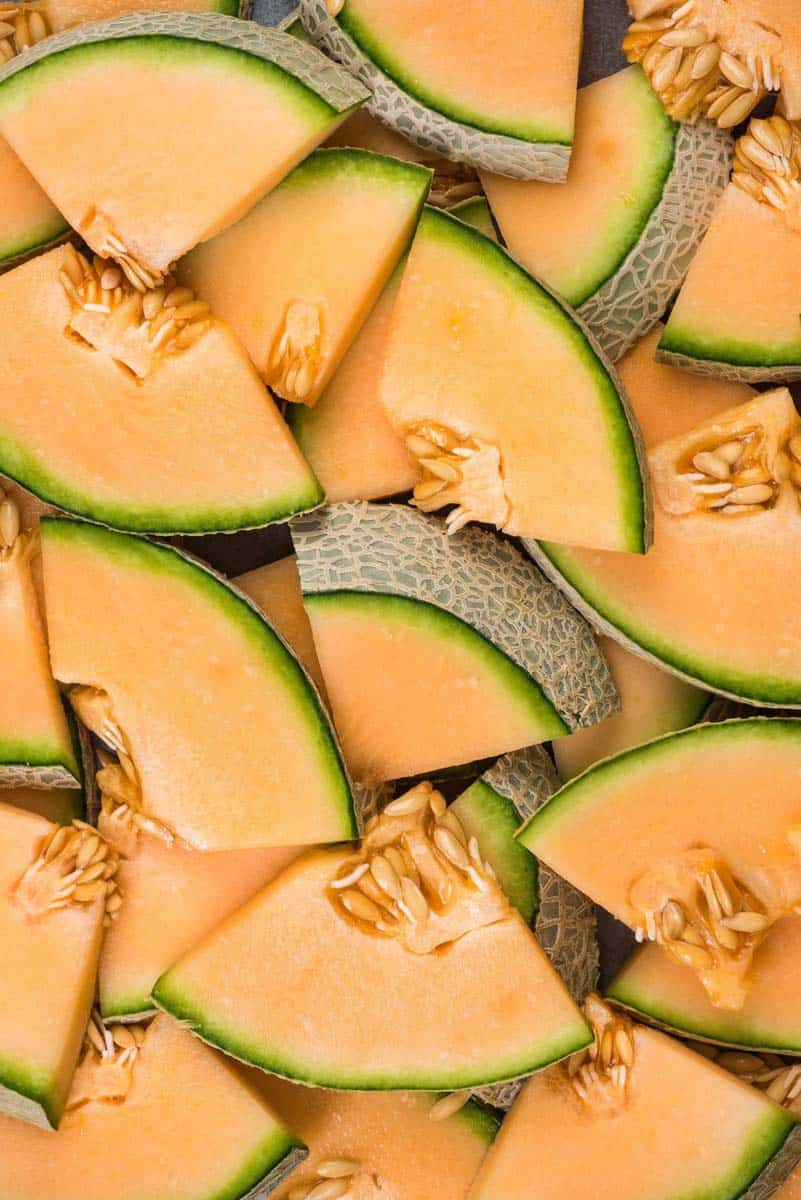
Why are my plants not producing fruit?
Typically when a cantaloupe plant doesn’t produce fruits (or produces small fruits that shrivel up and die before developing fully), it’s a pollination problem. While cantaloupes are self-pollinating—meaning they have both male flowers and female flowers on the vine, if you don’t have many bees or other pollinators to spread the pollen, you’re out of luck!
For the long-term, we recommend increasing pollinator activity by planting lots of pollinator-friendly plants in your garden. For the short-term, you might need to hand pollinate your cantaloupe vines. To do this:
- Carefully remove a male flower from the plant. Male flowers have a stamen, which is a pollen covered stalk in the center of the flower.
- Strip away the petals of the male flower so that only the stamen is left.
- Find a female flower—they will sit atop an immature, tiny melon. Insert the stamen from the male flower into an open female flower and gently tap the stamen on the stigma (a small, sticky knob in the female flower).
- Try to coat the stigma with as much pollen as possible. As long as there is pollen left on the stamen, you can use the same male flower several times on other female flowers.

Why are my cantaloupes not sweet?
The number one reason people don’t have sweet cantaloupe—they are harvesting them too early! Cantaloupes tell you when they are ready by “slipping” off the vine. A light touch where the stem meets the fruit, and a ripe cantaloupe will slip right off the stem. This is called “full slip.” Once your cantaloupe has full netting on the rind, check it daily for slip by lightly tugging on the stem—one day it’ll pop right off, and you’ll have a sweet and tasty cantaloupe!

How To Grow Cantaloupe: 6 Growing Tips
Cantaloupe is a delicious, sweet, and juicy fruit that makes a great addition to fresh salads and smoothies. Find out how to grow cantaloupe in your garden. . Download Printable Cantaloupe Growing Guide »
Materials
- Cantaloupe seeds or seedlings
Tools
- Organic mulch
- Watering system (drip irrigation, soaker hose, watering can...whatever you typically use)
- Cantaloupe growing guide
Instructions
- Choose the right kind of melon: Be sure to read up on the variety of cantaloupe you choose. Some work better for shorter growing seasons than others, some have more disease resistance, and some are easier to grow in containers or raised beds. Figure out what will work best in your garden.
- Don't set your plants out too early. The soil should be around 70°F before you put in your cantaloupe plants or seeds—7 or more days past your area's last frost date should be safe. Seeds should be planted 1/2" deep.
- Plant cantaloupe next to strong scents. "Smelly" plants like marigolds, onions, garlic, or mint will help repel bugs that like to munch on melon plants.
- Give them enough water. Growing juicy fruits requires a lot of water—your plants will need about an inch of water per week. Avoid getting the leaves wet during humid weather to avoid powdery or downy mildew.
- Put down a layer of mulch. Straw, pine shavings, or another organic mulch will help the soil retain all that water you're giving your plants, and will keep the soil nice and warm.
- Don't harvest too early. Wait until your cantaloupe has a full netted texture on the outside and easily comes off the vine before harvesting. If you have to tug on it, it's not ready yet!

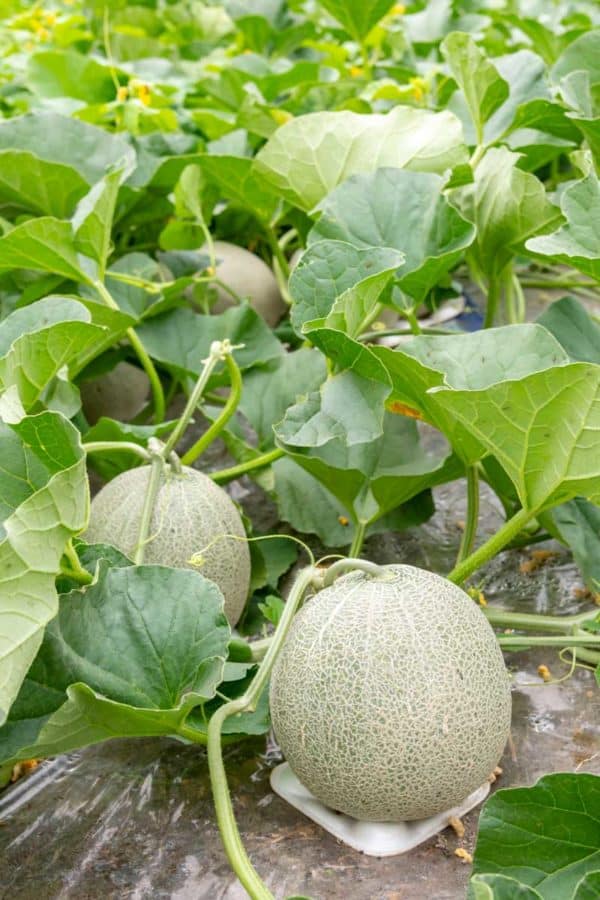


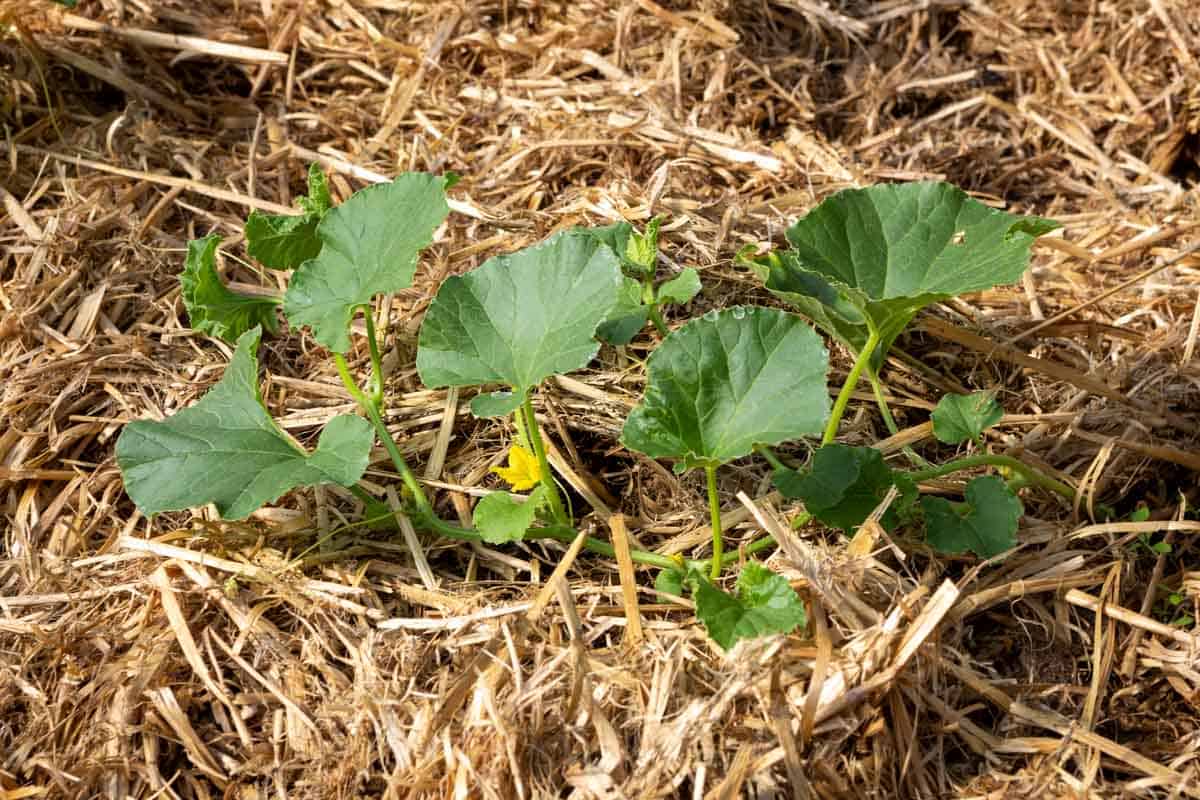
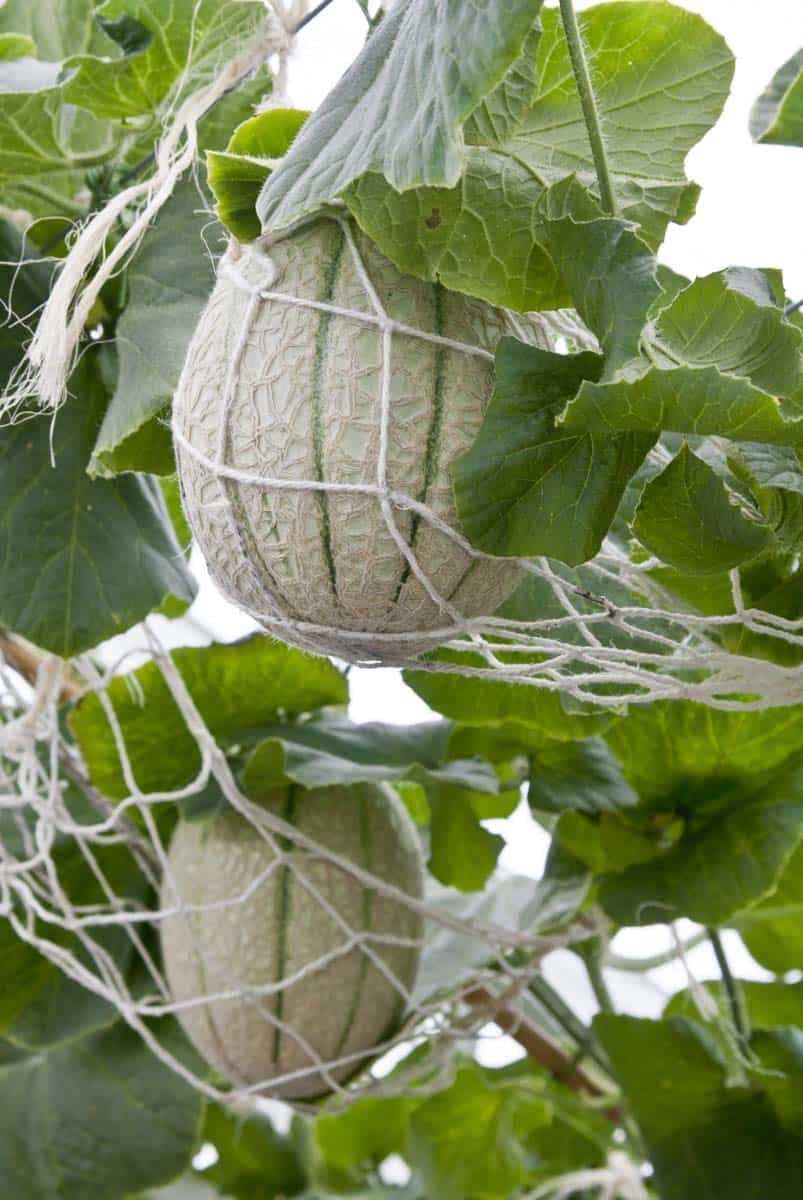
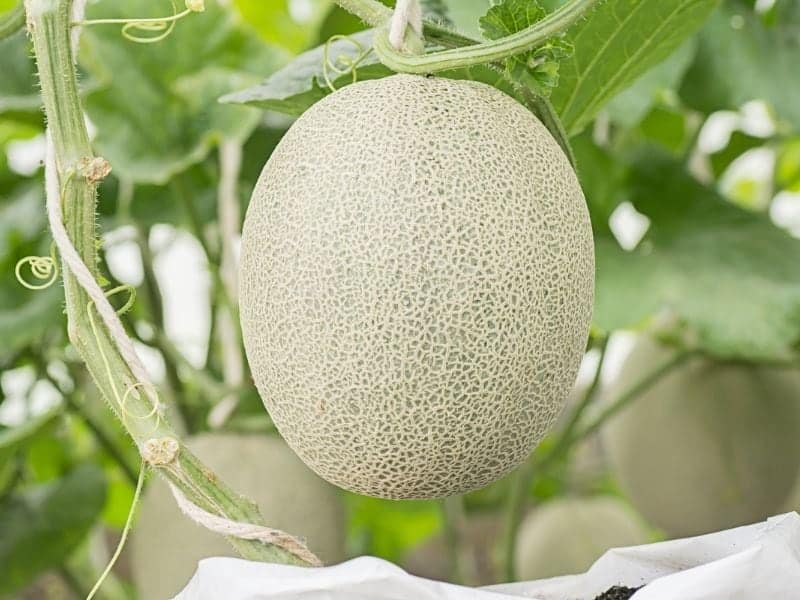






My Cantaloupe seeds are moldy. Are they still good to use?
Probably not, sorry!
To tell the truth, cantaloupe is my favorite kind of fruit because it is so fresh and it has its own special taste. It is so good that I came across your article because I would like to know how I can grow it for the reason that I would eat it practically every day. It is so wonderful that these tips are applicable not only for people who have fully favorable conditions to grow cantaloupe but for almost any person. Frankly, I wasn’t aware of the fact that there are such a variety of cultivars of cantaloupe and they all have such unique distinctive features. I can say that the greatest surprise for me is that melons take root well in the cool climate and that cultivation in such conditions is truly practiced. This information is so useful for me because I don’t live in a mild climate, but I wouldn’t want it to become a buffer.
♥️ This article, so helpful!